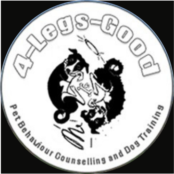
Rover came to us from a local rescue centre in 2011 when he was somewhere between 8 and 10 months old. He had come in as a stray and he was still serving his first 7 days waiting to be claimed when we spotted him. Luckily for us, his old owner never came. The rescue were calling him Rio, but we thought him more of a Rover.
We believe Rover was a Greyhound, Irish Terrier and Border Collie mix and he had facets of all these breeds. As there is Greyhound in the cross, he is also a Lurcher, so he thought he had 4 sets of facets! Like many Lurchers, Rover was easily frustrated.
Prior to going into rescue, Rover had been in an accident, most likely with a car necessitating a major operation before we brought him home.

Settling in: To begin with, Rover found it hard to settle down with us in the living room in the evenings but he became very frustrated if shut out. He would jump up and grab everything off the work surfaces. This was evidence of his having been left too long with nothing to do and he had learned to keep himself amused and gain attention by being destructive. We kept the surfaces clear and ignored him until eventually he lay down by the door to the living room at which point, we let him back in. In this way, he learned to calm himself down to get what he wanted. After going through this little routine a few times he had taught himself how to settle in the evenings and soon he settled altogether.
It was obvious that Rover hadn’t been walked and he was overwhelmed by the great outdoors. This over stimulation manifested by alternating between biting the lead and jumping on the ever tolerant and patient Daisy. One day I even had to carry him home as we weren’t making any forward progress! His gradual acclimatisation to the great outdoors was facilitated by a comfortable harness, appropriate play, some individual walking in quieter areas and judiciously timed treats. Soon Rover learned to walk beautifully on the lead. It may be that his natural Lurcher gait fitted in well with my walking pace. Many dogs pull on the lead, in part at least, because their natural walking pace is faster than ours.
Gradually with the imposition of house rules, exercise, encouraging calm behaviour throughout his day, training and appropriate play, Rover settled in.
Enduring problems:
- Rover was always reactive towards larger dogs and bouncy dog due to fearfulness. He only even snapped at other dogs and never hurt them
- He could also be fearful when strangers, especially men, reached towards him. Many strangers were drawn to Rover because he was so stunning looking and lovely but he would back off barking in a conflicted ‘I want to be friends but you are scary’ kind of way.
Rover’s problems with other dogs and strangers are largely due to lack of socialisation as a tiny puppy. Rover also had bad experiences, including when his leg was still painful.
Rover always loved small dogs and generally got on fine with all dog other than large bouncy ones and the gun dog breeds – oh and he never liked puppies! In common with many other dogs, black Labradors were Rover’s least favourite breed. Young Labradors can be very bouncy and unaware of their own strength and it’s not unusual for some dogs to find them too much. The facial expression of the black ones can be more difficult to read making them appear more threatening. We joked that Rover’s favourite tv show would be called ‘the Labrador gets it!’ where something bad happening to a Labrador in each episode!
Rover loved people, he was the most people orientated, loving and friendly dog I have ever had the enormous good fortune to share my life with. However, because didn’t go out as a tiny puppy, he could be fearful of strangers. If strangers ignored him to begin with he’d be their friend in a trice but it was very hard to get people to ignore him. This is a common problem for my clients with aggressive dogs. It’s hard to get the public to listen and even if they do, they often respond with “I’m really good at dog psychology” and continue on in. They need to be aware of the consequences of aggression towards people, if they provoke a bite, it won’t be them who ends up with a criminal record and a dead dog under the Dangerous Dogs Act! I find a very firm “please don’t” coupled with an outstretched flat of my hand works best to keep people at bay.
Both Rover’s jumpiness with people and reactivity towards other dogs improved massively in our time together, he always needed some degree of management in certain situations but we were pretty much able to take him anywhere. His confidence continued to improve daily and his loving, innocent lust for life was irresistible. Rover had a very optimistic outlook on life, and in contrast to Spot’s ‘negative expectancy bias’, his expectancy bias was positive. In the year before he died, Rover become MUCH more reactive again, we thought it was because he was in pain with a bad back but now know that it was because he had cancer.
When we found Rover at the rescue we lucked out. He expected the best to happen and most of the time it did. His bucket list was full! Rover had visited, France, Ireland and Ireland. He caught many wasps, he finally got to sniff a cat’s bottom and even had a cat friend (that wasn’t even on his bucket list but having a cat friend gave him delight and joy). Rover did agility, tracking, was a whizz at rally and was simply the best travelling companion.
